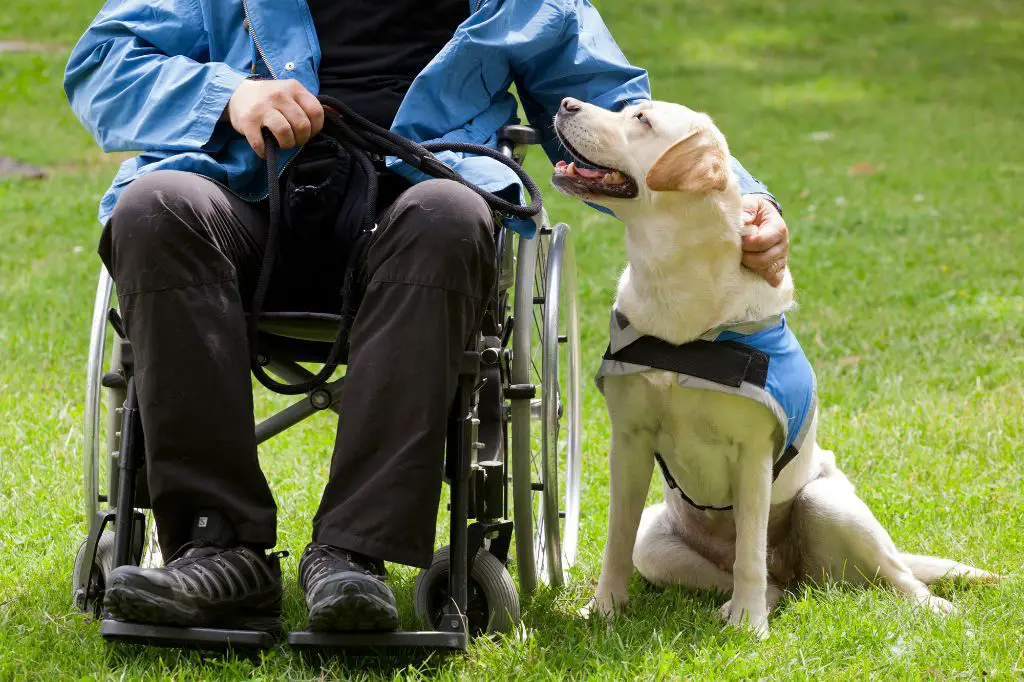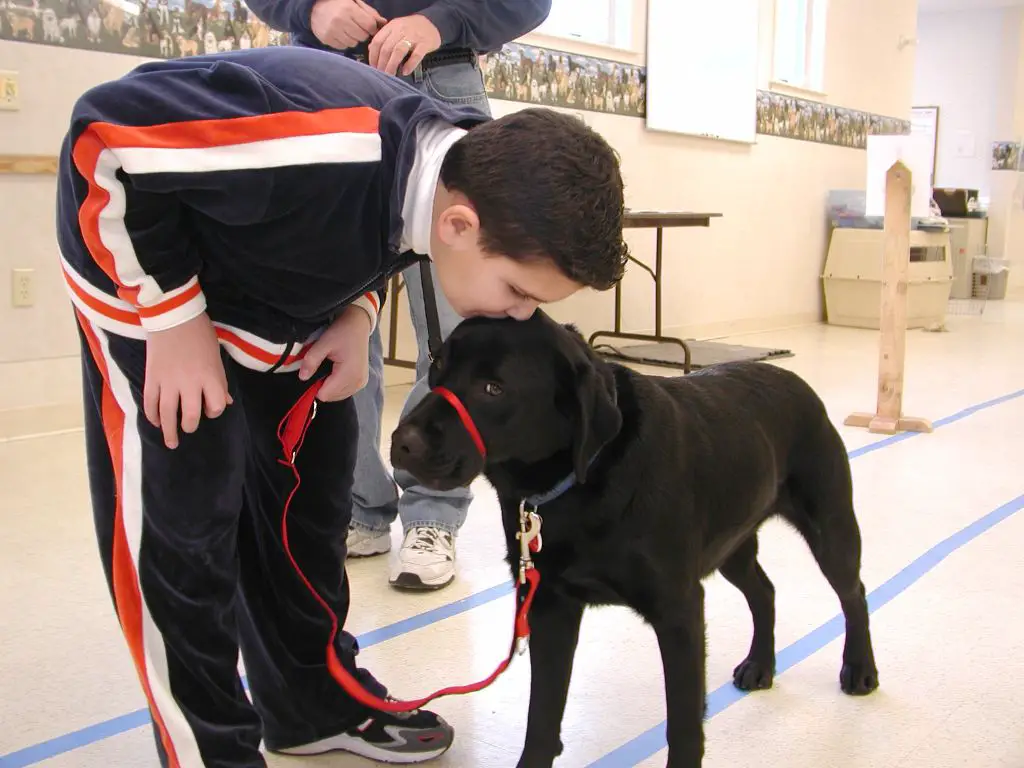What Are Petit Mal Seizures?
Petit mal seizures, also known as absence seizures, are brief, sudden lapses of consciousness or awareness that can happen dozens to hundreds of times per day. They often involve staring spells or slight muscle jerks, especially in the eyelids, facial muscles or hands. Petit mal seizures usually last only a few seconds but can occasionally persist up to 20 seconds.
Petit mal seizures most commonly affect children between the ages of 5 and 14. Some children will outgrow them while others will continue experiencing absence seizures into adulthood. Petit mal seizures involve a brief disruption in brain activity caused by abnormal electrical pulses. People experiencing a petit mal seizure are typically unaware it is happening and have no memory of the episode afterwards. Though generally harmless, frequent petit mal seizures can result in learning difficulties if left untreated.
How Petit Mal Seizure Dogs Can Help
Petit mal seizure dogs can provide invaluable assistance and support to people suffering from petit mal seizures in the following ways:
Detect Seizures Before They Occur
One of the most important jobs a petit mal seizure dog can perform is to detect an oncoming seizure before it happens. Through extensive training, these service dogs learn to recognize subtle signs and changes that precede a seizure. These early warnings give their handler critical time to get to a safe place or take medication before losing consciousness.

Provide Comfort and Companionship
Beyond their working duties, petit mal seizure dogs provide constant love, comfort and companionship to their handlers. Their soothing presence can help ease anxiety, depression and feelings of isolation that often accompany living with a chronic medical condition like epilepsy. Having a devoted service dog by one’s side can go a long way in improving quality of life.
Get Help If Needed
In the event of a severe or prolonged seizure, petit mal seizure dogs are trained to get help quickly. Depending on their specific training, the dog may get the attention of others nearby, fetch medication or a phone to dial 911, or activate an alarm system to summon emergency medical assistance. Their ability to take action could save their handler’s life in an emergency.
Seizure Alert Training
Seizure alert dogs are trained to detect subtle changes that occur prior to a seizure episode and alert the owner. This early warning can allow the person time to get to a safe place, take medication, or call for help before the seizure occurs. The dog alerts through behaviors like pawing, nudging, barking, or staring intently at the person.
Seizure dogs are able to provide this lifesaving early warning through their remarkable scent detection abilities. Scientific evidence suggests that some dogs can smell chemical changes that happen in the human body prior to a seizure. They can sense these subtle odors on a person’s breath or sweat. With proper training and a close bond with their handler, dogs can alert to an oncoming seizure minutes or even hours before it occurs.
Along with detecting odors linked to seizures, dogs can also notice slight behavioral changes that may precede an episode. Things like gaze, gait, anxious behaviors, or motor tics. Through extensive training and exposure, dogs learn to recognize these pre-seizure warnings specific to their human partner.
Professional seizure dog organizations use positive reinforcement methods to teach dogs how to properly alert owners to an impending seizure. The alerting methods are customized to the individual’s needs and situation, ranging from pawing, nudging, barking and more. With diligent training, a seizure dog can provide their human with crucial early warning of a seizure event.
Ideal Dog Breeds
When it comes to selecting the right seizure dog, certain dog breeds stand out as ideal choices. Some dog breeds possess inherent traits and characteristics that make them well-suited for seizure alert and response work.
Three of the most popular dog breeds for seizure assistance are:
-
Labrador Retrievers – Labs are one of the most popular service dog breeds, known for their gentle and patient temperament. They bond closely with their owners and are highly trainable. Their short coat also makes grooming easy.
-
Golden Retrievers – Golden Retrievers share many of the same fabulous traits as Labs. They are intelligent, calm, and devoted companion dogs. Their affectionate nature makes them wonderful seizure response dogs.
-
German Shepherds – German Shepherds are valued for their protectiveness and loyalty. They are focused workers and quick learners. Their size and strength allows them to provide steadying support.
While any dog breed can be trained as a seizure dog, Retrievers and Shepherds consistently excel in this role. Working closely with a reputable service dog trainer is key to success.

Obtaining a Seizure Dog
There are a few different options for obtaining a seizure dog to help detect and respond to seizures and epilepsy episodes.
Many families choose to go through professional seizure dog training organizations. These organizations carefully select dogs with the right temperament and then provide extensive professional training tailored to alerting and responding to seizures. Going through a training program ensures the dog receives quality training and is able to reliably perform seizure alert and response tasks. The downside is that professional training can be expensive, with costs typically ranging from $15,000-$30,000.
Some families choose to owner-train their own seizure dog. This involves choosing a dog, often from a shelter, that exhibits the right temperament, energy level, and bond with their handler. The owner then works on training the dog themselves, potentially with the help of a dog trainer, to recognize seizures and provide support. Owner-training takes a strong commitment but can be rewarding. Costs are significantly lower, often less than $5,000.
When considering how to obtain a seizure dog, families must weigh factors like cost, availability of professional programs, and their own ability to train a dog. But the right seizure dog, however acquired, can provide invaluable assistance, independence and peace of mind for those living with seizures.
Living with a Seizure Dog
Living and working with a service dog trained for petit mal seizures takes dedication. While seizure dogs provide invaluable help, caring for one requires ongoing training, bonding, and understanding. Here’s what to know about life with your new petit mal seizure dog.
It’s important to continue reinforcing your dog’s training at home. Work on maintaining solid obedience, refining alerts, and responding appropriately. Practice seizure response protocols regularly, like administering medication or activating emergency contacts. Reward your dog for successes during training sessions.

Deepen your bond through play, exercise, grooming, and simply spending time together. A strong relationship will help your dog remain attentive to your needs. Patience is key – it takes time to become an in-sync team.
Be aware of public access rights for service dogs. Federal law permits access to most public places like stores, transportation, schools, and more. Carry documentation from your dog’s training organization. Politely educate anyone unfamiliar with service dog laws.
Carefully plan any travel with your seizure dog. Contact airlines, hotels, and destinations ahead of time regarding policies. Bring necessary vet records and paperwork. Arrange appropriate bathroom breaks and relief areas. Pack food, bowls, toys, cleanup supplies, and other essentials.
Living with a petit mal seizure dog requires commitment, but the benefits make it worthwhile. With proper care and training, your dog will become an indispensable daily companion.
Success Stories
Jessica adopted Lucas, a 3 year old Labrador Retriever, when he was already trained as a seizure dog. Jessica has epilepsy and experiences several petite mal seizures each week. Since bringing Lucas home, he has proven adept at detecting Jessica’s seizures minutes before they happen. Lucas will paw at Jessica and whine when he senses a seizure coming on, which gives her time to get to a safe place or take medication. Jessica says Lucas has given her a sense of security and comfort she’s never had before. His companionship alone has made a huge difference in her daily life.

James was matched with Molly, a Cavalier King Charles Spaniel, when she was just a puppy. James worked closely with Molly’s trainer to reinforce her alerting abilities as she grew. Now 2 years old, Molly has learned all of James’ pre-seizure signs and behaviors. She stays by James’ side when he experiences clusters of petite mal seizures, keeping him safe. James says he can’t imagine life without Molly now. Her affectionate nature makes the hard days a little easier. With Molly’s help, James has been able to gain more independence and confidence.
Sarah’s parents got her Luna, a 2 year old Pit Bull Terrier, as a graduation gift. Sarah has struggled with absence seizures since elementary school. Now in college, she experiences increased anxiety about having a seizure in public on campus. Luna helps ease Sarah’s worries by subtly alerting her to oncoming seizures. If Sarah starts to stare off into space, Luna will gently nuzzle or lick her face to draw her attention. This gives Sarah a chance to get somewhere private before the seizure happens. Luna’s sweet, silly antics never fail to make Sarah smile. Her mere presence is a comfort.
Frequently Asked Questions
Many people have questions about getting and living with a seizure dog. Here are some of the most common questions:
How accurate are seizure dogs at detecting seizures?
Studies show that seizure dogs can identify seizures before they happen with about 90% accuracy. However, accuracy varies based on the individual dog’s training and natural abilities. The most well-trained dogs can pick up on subtle signs and alert their owners to an oncoming seizure minutes or hours in advance.
Can any dog be trained as a seizure dog?
Not all dogs have the temperament and abilities needed to be a successful seizure dog. Breeds like Golden Retrievers, German Shepherds, and Labrador Retrievers tend to do well with seizure alert training. The ideal dog is intelligent, trainable, calm, and bonded with their owner.
Do I need a professional service dog trainer?
Working with an experienced service dog trainer is highly recommended. They can help select a dog with the right temperament, provide customized alert training, and ensure your dog reliably alerts before seizures. Trying to train a seizure dog on your own is very difficult.
Can a seizure dog prevent seizures or make them less frequent?
Unfortunately, seizure dogs do not prevent seizures or reduce their frequency. Their role is to alert owners of oncoming seizures, so they can get to safety and prepare. However, the peace of mind and independence a seizure dog provides can help reduce seizure-related stress and anxiety.
Additional Resources
Here are some helpful links and organizations to learn more about getting a seizure dog or living with epilepsy:
- Epilepsy Foundation – Seizure Dogs
- Epilepsy Society – Assistance Dogs
- Epilepsy.com – Assistance Dogs
Some organizations that provide seizure dogs include:
- 4 Paws for Ability
- Canine Partners for Life
- Freedom Service Dogs
- Little Angels Service Dogs
References
Epilepsy Foundation. “Seizure Dogs.” Accessed Jan 30, 2023. https://www.epilepsy.com/article/2014/3/seizure-dogs
Assistance Dogs International. “Seizure Alert Dogs.” Accessed Jan 30, 2023. https://assistancedogsinternational.org/resources/types-of-assistance-dogs/seizure-alert/
Hart, L.A., Zasloff, R.L. and Benfatto, A.M., 1996. The socializing role of hearing dogs. Applied Animal Behaviour Science, 47(1-2), pp.7-15.
Strong, V., Brown, S.W., Walker, R. and Walker, S., 1999. Seizure‐alerting and‐responding dogs: Current knowledge and experience. Seizure, 8(2), pp.115-118.
Dalziel, D.J., Uthman, B.M., Mcgorray, S.P. and Reep, R.L., 2003. Seizure-alert dogs: a review and preliminary study. Seizure, 12(2), pp.115-120.
Brown, S.W. and Strong, V., 2001. The use of seizure alert dogs. Seizure, 10(1), pp.39-41.
Kirton, A., Winter, A., Wirrell, E. and Snead, O.C., 2008. Seizure response dogs: evaluation of a formal training program. Epilepsy & Behavior, 13(3), pp.499-504.